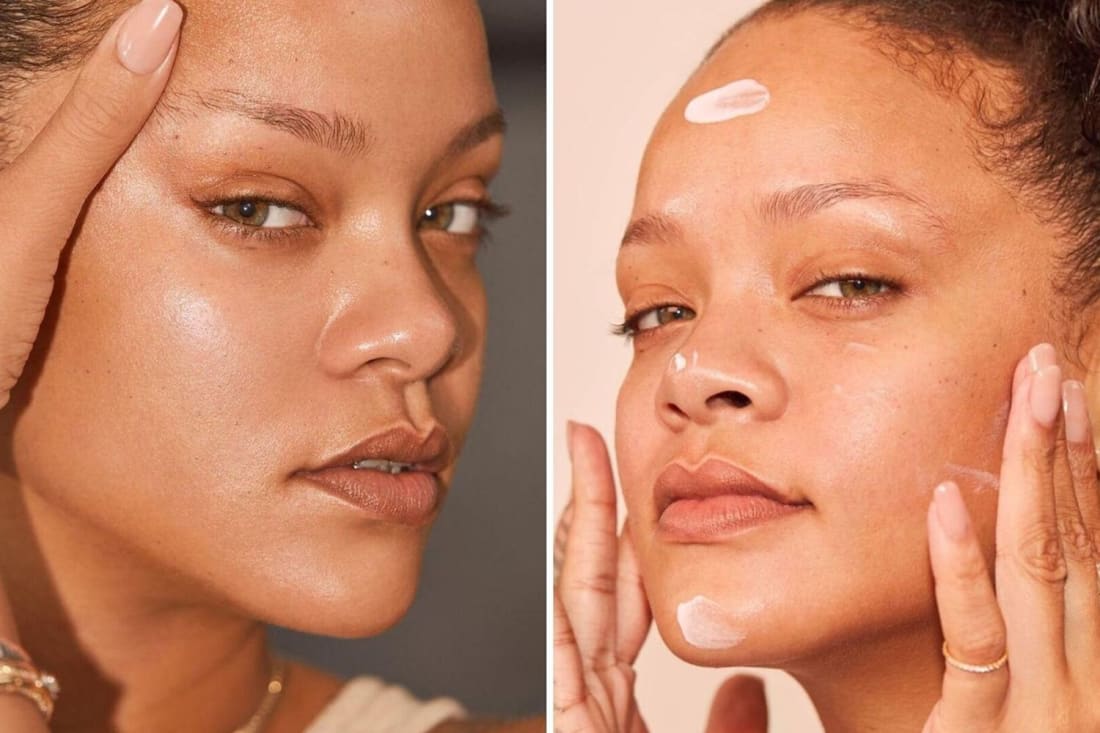What is LED light therapy?
From aftercare to the science behind the skincare treatment, an expert spells out EYNTK about LED light therapy
From aftercare to the science behind the skincare treatment, an expert spells out EYNTK about LED light therapy
Over the past few years, the term ‘skincare routine’ has experienced quite the glow-up. While the classic cleanser-moisturiser-SPF (and maybe the odd serum) regime is still very much thriving, the beauty and technology worlds are continuing to fuse together alongside, and the results are ~sometimes~ revolutionary. Which means good news for those looking to explore different at-home routines. Or, treatments that were previously only accessible via a doctor or dermatologist.
One of these is LED light therapy, which you’ll no doubt have heard of. It’s not a new idea, by all means, and plenty of celebs have sought out its effects in the past. From Kim K to Kate Hudson to Victoria Beckham, it’s said to help with a myriad of skin issues, including acne, rosacea symptoms, inflammation, anti-ageing and even wound healing. Erm, where do we sign up?
And even though it’s got form for being a trending topic, plenty of derms, experts and scientific studies have all backed up its claims and its results. In fact, this study, titled ‘Photodynamic and photobiological effects of LED therapy in dermatological disease’ has labelled it as one of the “safest” and “emerging” tools for the treatment of said conditions. Plus, disorders linked to hair growth, too.
So, if you’re looking for a skin treatment that really does live up to the hype (both from the comfort of your latest Netflix binge or in the hands of a pro), LED light therapy might just be your ticket to a consistent dewy and glowing complexion. Kimberly, watch out.
LED light therapy - what is it?
Before you next day deliver the first mask you see, let us stop you for a sec. We spoke to BSM-certified sleep expert, Nicole Eichelberger about all things LED, including what the therapy actually is, what skin benefits it can provide, and if there are any dangers.
“LED (light-emitting diode) light therapy is a type of skin treatment that uses various wavelengths of light to improve the appearance of the skin,” she says.
“It is a non-invasive and painless treatment that can be used to treat a variety of skin conditions, including acne, scarring, and signs of ageing.”
In terms of the science behind it, the therapy works by exposing the skin to red, blue, yellow and near-infrared LED lights. And depending on the wavelength of the light, the treatment will penetrate the skin at different depths.
Nicole explains that the light energy stimulates the production of collagen and elastin, “which can improve the appearance of the skin and reduce the appearance of fine lines and wrinkles.”
She also adds that symptoms of acne are reduced by the LED lights killing acne-causing bacteria and reducing inflammation. Over a course of treatments - depending on the severity of the condition - the therapy “can improve the overall health and skin appearance.”
Of course, nothing happens overnight, and treatments like these take time to really start taking an effect. For some extra knowledge though (if you are planning on committing to the cause), it’s helpful to know what the different wavelengths do, and which would be the most beneficial for your situation:
- Blue light: This affects the uppermost layer of the skin, and is essentially the least extreme.
- Yellow light: The second weakest on the scale, this light travels a little deeper into the skin.
- Red light: You know what’s coming next. Yep, red light penetrates even further.
- Near-infrared light: This is the strongest wavelength, and it penetrates the skin deeper than the other lights.
It’s not just about how little or how deep the light travels into your skin, either. There are also different LED colours for different outcomes. According to Cleveland Clinic, experts believe that blue LED light therapy can destroy the acne bacteria we mentioned before.
Red, on the other hand, has the potential to reduce inflammation and stimulate collagen production. This protein is responsible for keeping the skin plump and youthful, plus reducing those pesky fine lines.
There’s no one-size-fits-all therapy either, as some skin specialists may suggest a combination of the colours to achieve your desired outcome. There are also home masks that combine colours, too, so it’s worth checking in with your GP or derm to decide which version is best for you. It all depends on your specific issue.
LED light therapy benefits
“LED light therapy can be used to treat a variety of skin conditions,” assures Nicole, including:
- Acne: Blue and red wavelengths of light are associated with killing acne-causing bacteria and reducing inflammation, which can improve the appearance of acne-prone skin.
- Ageing: Red and infrared wavelengths can stimulate collagen and elastin production. This can combat fine lines and wrinkles, plus give the skin a more youthful look.
- Hyperpigmentation: Blue wavelengths of light can be used to reduce age spots and sun spots - all symptoms of hyperpigmentation.
- Rosacea: Red wavelengths of light can be used to reduce the common symptoms of rosacea, including painful redness and inflammation.
- Scarring: Red and infrared wavelengths can help to improve the appearance of scar tissue by again, stimulating collagen and elastin production.
- Sun damage: Red and infrared wavelengths of light can improve the appearance of sun-damaged skin by stimulating the production of collagen and elastin.
LED light therapy before and after
Regardless of whether you’re going to a professional or using an at-home kit, it’s important to have clean skin before hitting it with LED lights. And if it’s the face, make sure it’s make-up free, too.
If you’re in your dermatologist’s office, you might be offered an additional treatment before the therapy, like a facial. FYI, this usually depends on your skin type. Sensitive sisters, this might not be for you.
Once you’ve sat through the session, (again whether you’re at home or not) returning to your regular activities is absolutely fine. There’s just one exception: make sure you stay out of the sun for a few days and wear extra SPF.
LED light therapy dangers
If light therapy wasn’t a relatively safe procedure, there wouldn’t be countless treatments available or LED kits openly for sale. It’s pretty much risk-free when the research is done right (i.e your professional is actually a professional and your home mask or device is legit and approved) and the treatment is administered right.
Top tip: just read the instructions and follow them carefully if it’s the first time you’re trying it.
Alas, should you experience any rare side effects, it’s important to know the signs. These might include:
- Redness
- Pain
- Increased inflammation
- Rash
LED light therapy at home
The tools you use all depend on what you want to achieve from the therapy, really. For example, if you’re looking to smooth your complexion, full-face masks are super popular as they penetrate the whole face with the same strength of light.
You can also get goggle versions that focus on reducing fine lines around the eyes if that’s the sort of thing you’re after.
Or, there are wands that you can use on different areas of the body as well as the face, including the neck and hands.
Get your glow on
Ultimately, LED light therapy is not a fad, and it’s got the green light from doctors and derms. Nicole just stresses that it’s important to note that “it’s not a cure-all and may not be effective for all skin conditions,” adding that “it’s always best to consult with a dermatologist or other skin care professional to determine the best treatment plan for your specific skin concerns.”



